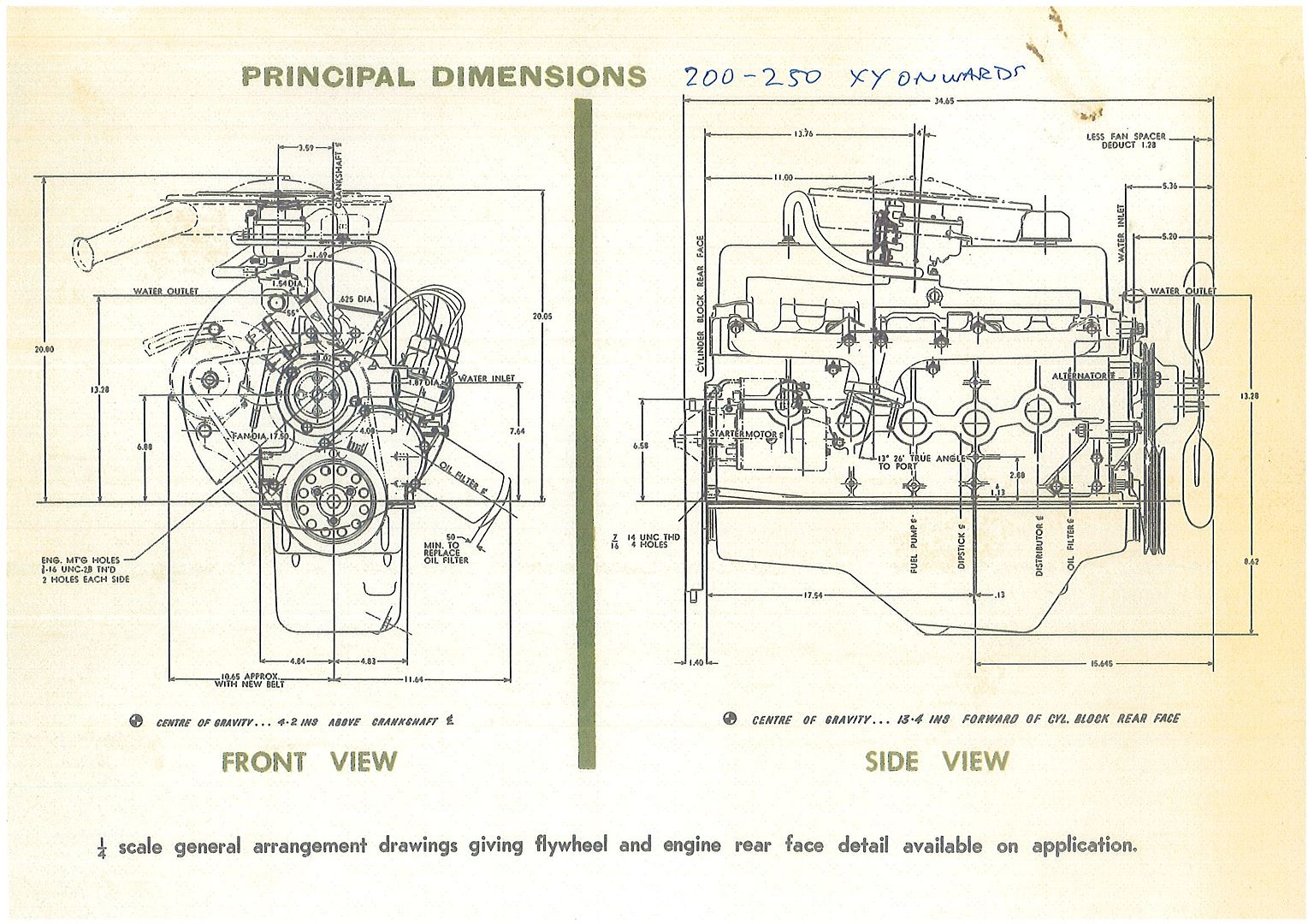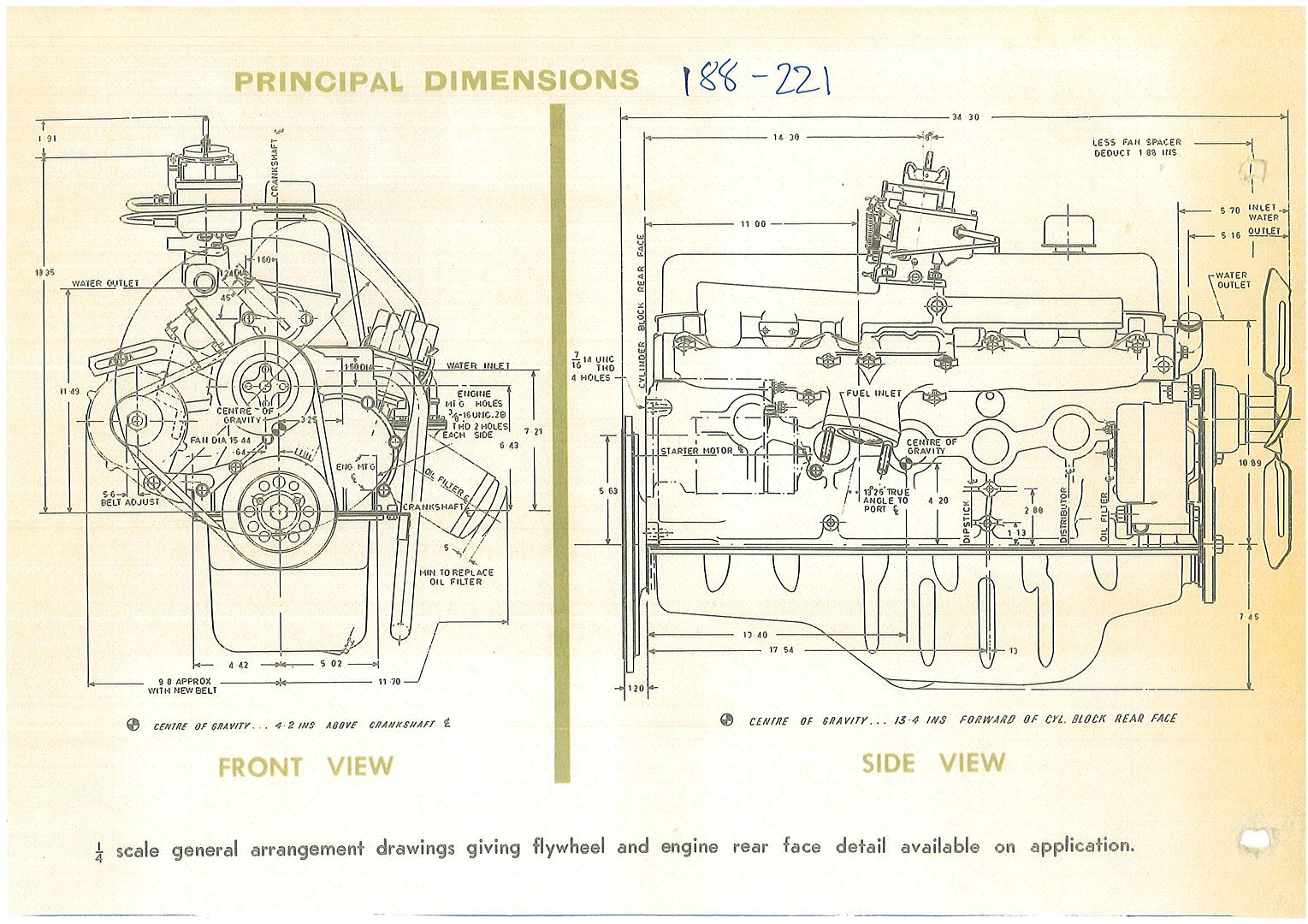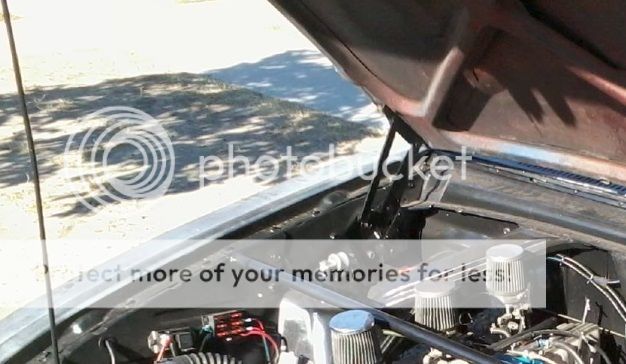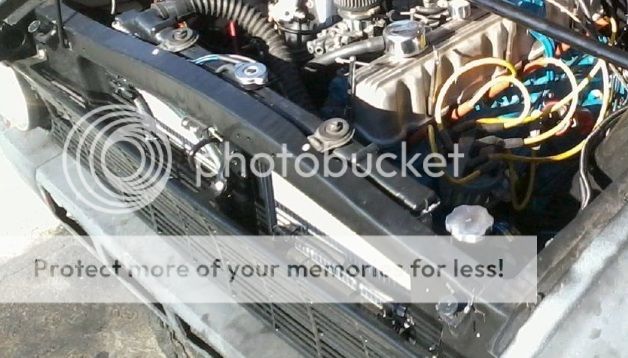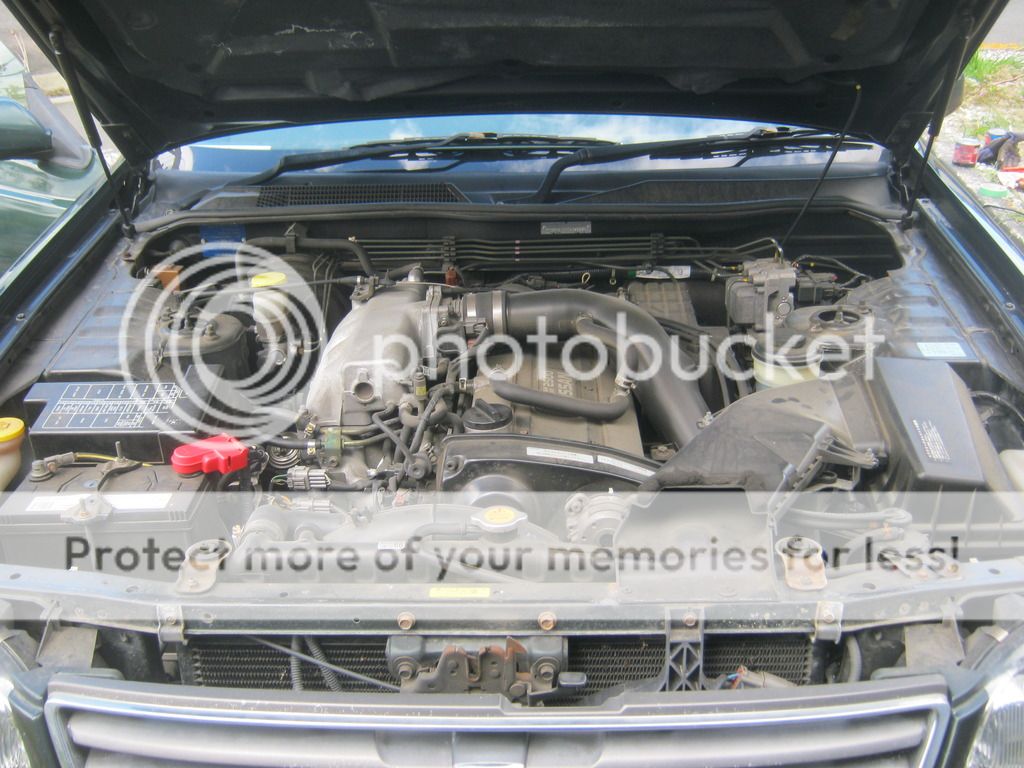Odmark91":2ayow5tt said:
Thank you for all the replies, seems the ford L6 is 1.9 inches longer than the Vauxhall 6, and the bellhousing on the ford is 1.9 inches shorter

This turned out to be an interesting thread, good read

:thanks:
The 58-59's had none of the extra room in the nose as the radiator was large and the nose curved over.
You could fit a Vauxhall 3.3 or 2.6 in them as my mates did. The radiator just got put in the fornt side of the radiator suport, 55 Chevy 6 cylinder style.
The next year, in preperation for the planned even bigger 162, the 138 got the later front end pressing and hood. The radiator is best replaced by a Skyline item, it liberates the most space.
In NZ and the UK, the Rover 3500 V8 was an easy and popular swap, and they just stole a Rover 3500 radiator or Falcon or Cortina 6 radiator.

The V8's had to be pushed right far forward due to the English disaster...building the car around the engine.


In addition to the Buick 215, the similar sized 289 and 302 SB Fords, and the 2.8 Cologne and 2.5/3.0 Essex V6's were also common swaps. Same deal...engine pushed right far foward and mounted high up in the chassis to clear the h-u-g-e Burman steering box and terriable kinked firewall which wasn't flat and simple like a 48-215 or FX Holden.

see
viewtopic.php?f=1&t=77073
xctasy":2ayow5tt said:
https://fordsix.com/viewtopic.php?f=1&t=74460&p=573343#p573343
Radiator.
64 200 ranchero found an old Nissan Maxima radiator for his early Falcon 200.
Same as my AWD Stagea's
The good thing is Nissans rust, and can donate a plastic radiator for little money...
Incidently, the whole car was designed for a Damiler SP250 2.5 Liter V8, but at the last moment, the plans got panned by GM. The axle is the same as the Jag Mark II, an HA series 8.5" Jeep/AC Cobra center in live axle form.
Biggest issue is just the rust. Since the 61-62's had the otion of Power glide or Hydramatic, the 62 Crestas especially were a heck of a lot stronger, and had an extra cross member to tie the whole structure back together, the early 58-59's were weaker and the updates were all postive. The later PB and PC Vauxhalls were the best banger racers out...you could knock off a whole heard of Holdens in a night, and the engines just wouldn't die. And the gas tank was hidden behind the passanger seat, Holden Gemini style.
Only other issues are the cost of rebushing the king pins in the Independent Front Suspension, as its not an HD/HR Holden style front end with ball joints. Its IFS is very reasonable, and there are parts around, you just gotta look.
The early PA had 4 turns look to lock steering with a tight turning circle. Later ones were lower geared to cope with the heavier engines. The Falcon engine is much lighter than the later 2.6 and 3.3 Vauxhall engines, so an earlier steering box is an okay swap.
The spring rates and dampers can be stiffened a lot if you wish, and later model anit roll bars fit in.
1976-1986 SD1 3500's, Rover P6 and BMC 1800 Tasmin/Kimberly mag wheels have the same wheel PCD.
A set of Vitesse 3500 mag wheels just fit, since the track is very narrow.
MGB GT front disc brakes have a Ferrari 108 mm four stud knock off capable front disc brake. GM used the MGB GT front discs and a VH25 brake booster, and early VH44 from the Hillman Hunter and Arrow and some Australian XR Falcons with disc brakes.
The update to 1962 spec 2.6 discs is to be recomended. Later PB/PC IFS and brake systems are similar, but the whole mounting system differs, and the front ends have ball joints.
For brake circuits, you have nay number of options, and the hydraulic clutch doesn't have to remain if you need space. Australian Fords didn't use the Z bar clutch, they used the PBR slave cylinder, so you can kill two birds with one stone if you are looking at a 200 Falcon engine swap.
Pre 65's give you a lot of scope.
I like Vokies, they are really different, but Ford stuff is so much nicer to work on, and everyone in Europe and Kiwi Land looked to the simplier US or Geramn/English V6 swaps because they were easier to service and access.
If you find an old 2.6 though, they are a heck of a lot tougher and as long as you don't have the porus awfull alloy 1-bbl intake and exhasut system, with twin or triple carbs and a New Old Stock header for a 3.3 Victor or PB/PC Vauxhall, even a 12 port 2.6 can simply scream. It can take a Trimatic if you find the ealier GM 180 THM bell housing common to all 1971 to 1977 3.3 Vauxhalls.
The Vauxhall 3.3 is simply the best four bearing in line six cylinder engine ever made, but its heavy and needs elocution lessons.
The seven bearing Ford 200 six way is lighter, and so compact. It has way more latent potential these days than the very heavy 3.3 Vauxhall engine.
Enjoy your project.



